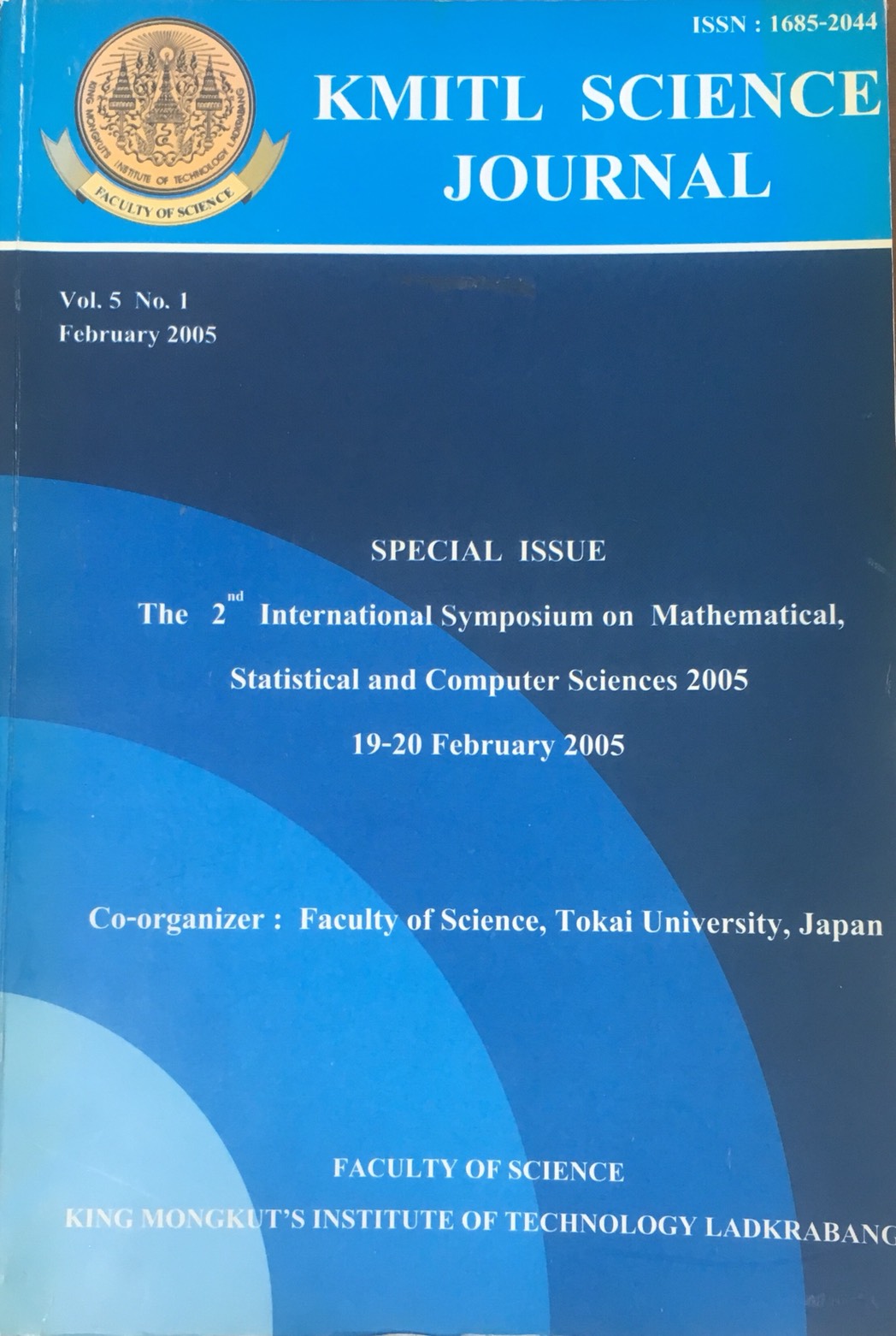TVAR Modeling and Time-Varying Frequency Estimation of Nonstationary Signals
Main Article Content
Abstract
Time-varying autoregressive (TVAR) approach is used for modeling nonstationary signals, and then the frequency information of the signals is extracted from the TVAR parameters. Two methods may be used for estimating the TVAR parameters: the adaptive algorithm and the basis function approach. Adaptive algorithms, such as the least mean square (LMS) and the recursive least square (RLS), use a dynamic model for adapting the TVAR parameters and are capable of tracking time-varying frequency, provided that the variation is slow. The basis function method employs and explicit model for the TVAR parameter variation and the model parameters are estimated via a block calculation. It is observed in our study that, if the signals have a single time-varying frequency component, the RLS with a fixed pole on the unit circle yields the fastest convergence. But none of the adaptive algorithms can successfully track fast varying frequency. The basis function method, although is not so effective in tracking the frequency jump, but capable of tracking either the fast or the slow time-varying frequencies.
Keywords: Time-varying autoregressive, Nonstationary signals, Basis function method, Adaptive algorithms, Frequency Estimation.
Corresponding author: E-mail: sodsri@su.ac.th
Article Details
Copyright Transfer Statement
The copyright of this article is transferred to Current Applied Science and Technology journal with effect if and when the article is accepted for publication. The copyright transfer covers the exclusive right to reproduce and distribute the article, including reprints, translations, photographic reproductions, electronic form (offline, online) or any other reproductions of similar nature.
The author warrants that this contribution is original and that he/she has full power to make this grant. The author signs for and accepts responsibility for releasing this material on behalf of any and all co-authors.
Here is the link for download: Copyright transfer form.pdf
References
[2] Kay, S.M. 1998 Modern Spectral Estimation, Prentice Hall, Englewood Cliffs, NJ.
[3] Marple, S.L., 1987 Digital Spectral Estimation, Prentice Hall, Englewood Cliffs, NJ.
[4] Therrien, C.W, 1992 Discrete Random Signals and Statistical Signal Processing, Prentice Hall, Englewood Cliffs, NJ.
[5] Hall, M.G., Oppenheim, A.V., and Willsky, A.S., 1983 Time Varying Parametric Modeling of Speech, Signal Processing, 5, pp 267-285.
[6] Liporace, L.A., 1975 Linear Estimation of Nonstationary of Nonlinear Signals, J. Acoust. Soc. Amer., 58(6), pp 1288-1295.
[7] Haykin, S., 1996 Adaptive Filter Theory, Prentice Hall, Englewood Cliffs, NJ.


